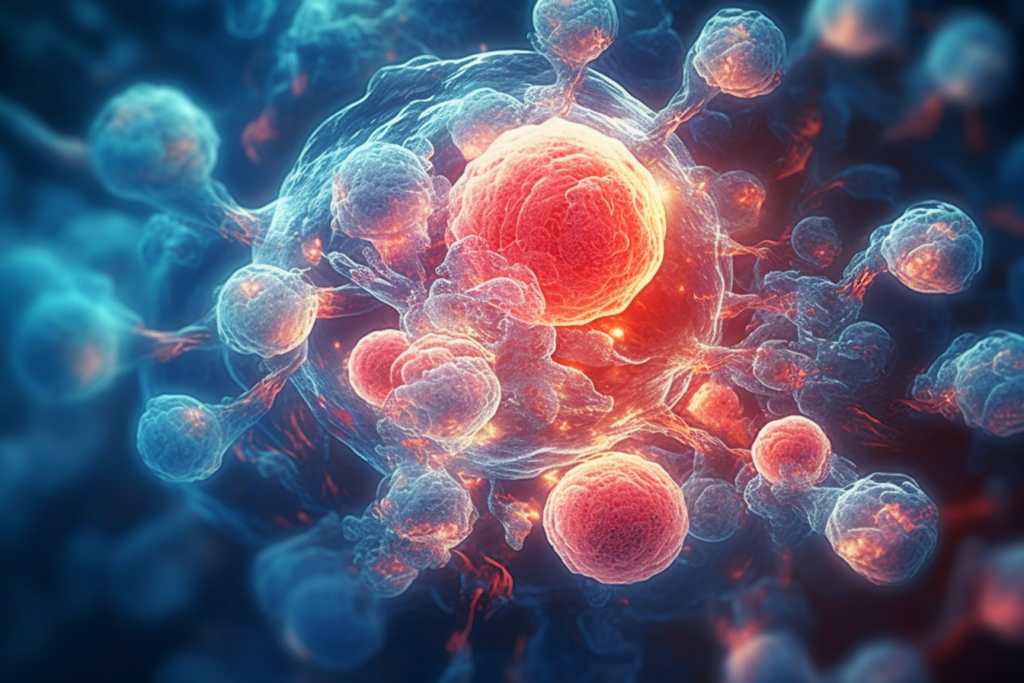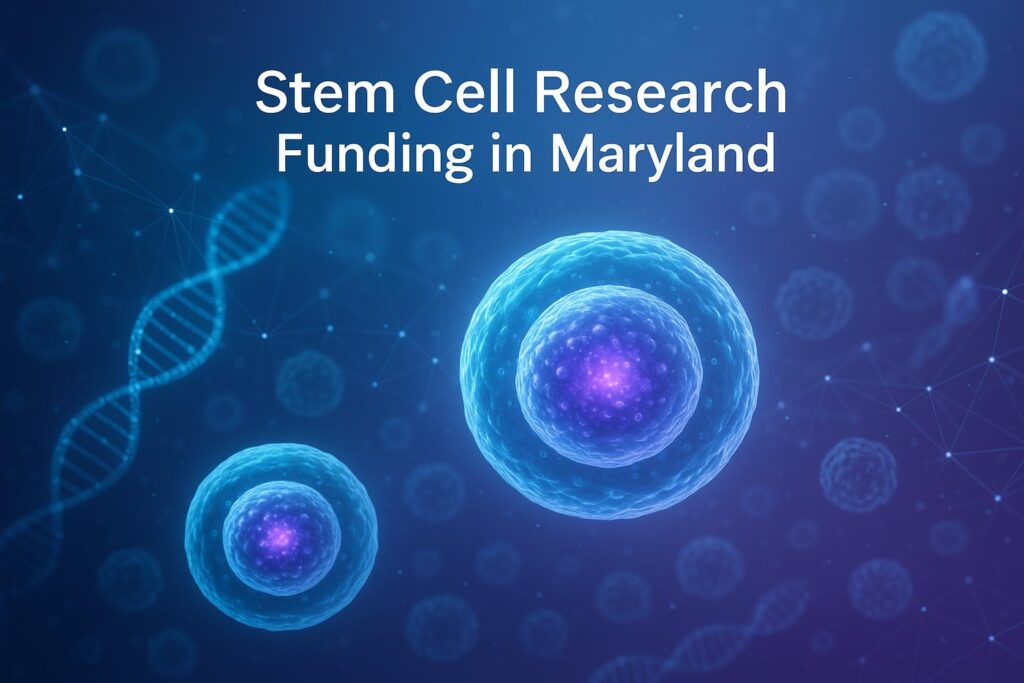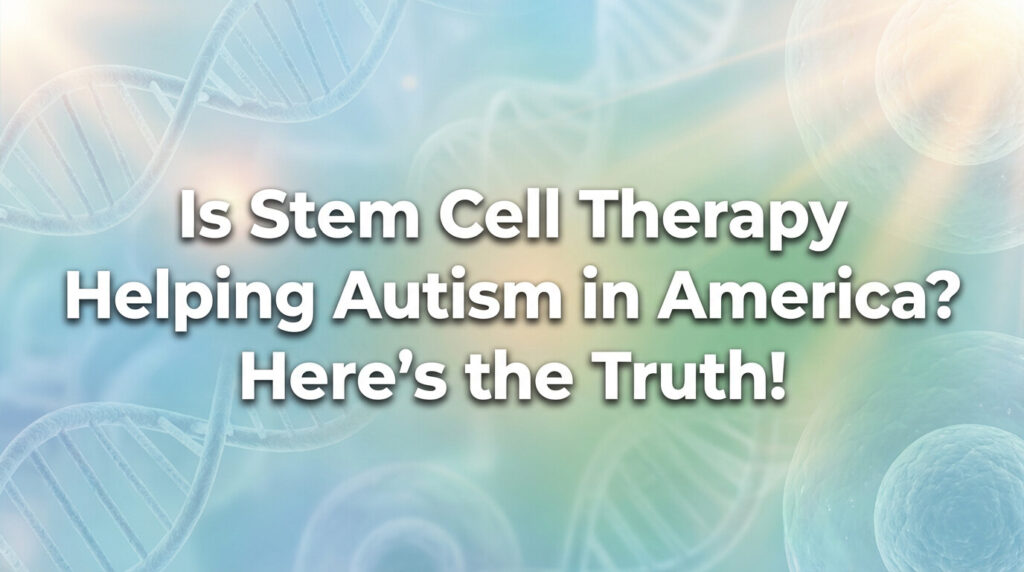Welcome to our exploration of a fascinating and rapidly evolving field in medical science – stem cell research. If you’ve ever been intrigued by the idea of the body’s ability to heal itself, you’re in the right place. We’re about to dive into the world of cellular reprogramming and its transformative impact on stem cell research.
Imagine, if you will, a world where a simple skin cell can be coaxed to become a beating heart cell, or a neuron, or even a liver cell. Sounds like science fiction, doesn’t it? But this is precisely what cellular reprogramming is all about. It’s a revolutionary technique that’s reshaping our understanding of biology and offering new hope for the treatment of various diseases.
To give you an idea of the potential of this field, let’s consider an anecdote. Picture a patient with a severe heart condition, one that conventional medicine can’t adequately address. In the past, the prognosis might have been grim. But with advances in cellular reprogramming, we could theoretically take skin cells from this patient, reprogram them into heart cells, and use these new cells to repair the damaged heart tissue. This is the kind of game-changing potential we’re talking about.
In this article, we’ll guide you through the fascinating journey of cellular reprogramming and its implications for stem cell research. We’ll start with the basics, explaining what stem cells are and why they’re so important. Then, we’ll delve into the science of cellular reprogramming, exploring how it works and why it’s such a breakthrough for stem cell research. We’ll also discuss the applications, ethical considerations, and future directions of this exciting field.
So, whether you’re a seasoned scientist, a curious student, or just someone interested in the future of medicine, we invite you to join us on this journey. Let’s explore together how cellular reprogramming is advancing stem cell research and potentially changing the face of medicine as we know it.
Understanding Stem Cells
Before we delve into the intricacies of cellular reprogramming, let’s take a moment to understand the stars of our story – stem cells. These are the body’s master cells, the foundation upon which all other cells with specialized functions are built.
There are three main types of stem cells we’ll focus on: Embryonic Stem Cells (ESCs), Adult Stem Cells, and Induced Pluripotent Stem Cells (iPSCs).
Embryonic Stem Cells (ESCs) are derived from embryos. They are what we call “pluripotent,” meaning they can turn into any cell type in the body. Imagine them as the blank slates of the cellular world, ready to be written upon.
Adult Stem Cells, on the other hand, are a bit more set in their ways. They reside in specific tissues like the blood, skin, or brain, and they can only generate cells for the tissue or organ in which they live. Think of them as the body’s repair crew, always on standby to replace damaged or aging cells.
Then we have Induced Pluripotent Stem Cells (iPSCs), the new kids on the block. These are adult cells that have been genetically reprogrammed to an embryonic stem cell-like state. In other words, they’re adult cells that have been convinced to act like embryonic stem cells. It’s like convincing a seasoned chef to go back to culinary school and learn new cuisines!
The potential of stem cells in regenerative medicine is immense. They could potentially be used to regenerate tissues and organs, offering new treatments for diseases like Parkinson’s, diabetes, heart disease, and more.
To illustrate, let’s consider another anecdote. Imagine a patient suffering from Type 1 diabetes, a condition where the insulin-producing cells in the pancreas are destroyed. In theory, stem cells could be used to generate new, healthy insulin-producing cells for this patient, potentially offering a cure.
But how do we get these stem cells, especially the versatile embryonic stem cells or iPSCs? That’s where cellular reprogramming comes in, and that’s what we’ll explore in the next section. Stay tuned!
Cellular Reprogramming: A Revolution in Stem Cell Research
Now that we’ve introduced stem cells, let’s move on to the transformative process that’s been a game-changer in stem cell research – cellular reprogramming.
Cellular reprogramming is like a time machine for cells. It’s a process that allows us to take mature, specialized cells and rewind their biological clocks, turning them back into stem cells. It’s as if we’re giving cells a chance to relive their youth and choose a different career path.
The concept of cellular reprogramming was first introduced by a brilliant scientist named Shinya Yamanaka. He and his team discovered that by introducing four specific genes (nicknamed the Yamanaka factors), they could convince adult cells to behave like embryonic stem cells. This discovery was so revolutionary that it earned Yamanaka the Nobel Prize in 2012.
To understand the significance of this, let’s consider an analogy. Imagine you’re a skilled pianist, trained for years to master your craft. Then, one day, you’re given a magical music sheet (the Yamanaka factors, in our case). As you play this music, you suddenly find yourself able to play not just the piano, but any instrument you wish. That’s the kind of transformation we’re talking about with cellular reprogramming.
The creation of these reprogrammed cells, known as Induced Pluripotent Stem Cells (iPSCs), has opened up new possibilities in stem cell research. With iPSCs, we no longer need to rely on embryonic stem cells, which come with ethical concerns and supply limitations. Instead, we can create pluripotent stem cells from readily available adult cells, like those from skin or blood.
However, as with any groundbreaking technology, cellular reprogramming isn’t without its challenges and limitations. In the next section, we’ll delve deeper into the process of cellular reprogramming and discuss some of these challenges. So, stick around as we continue our journey into this exciting field!
The Process of Cellular Reprogramming
Now that we’ve introduced the concept of cellular reprogramming, let’s dive a bit deeper into how this process actually works. It’s a bit like a magic trick, but instead of pulling a rabbit out of a hat, we’re pulling a stem cell out of an adult cell.
The process starts with the collection of adult cells, often skin or blood cells. These cells are then exposed to the Yamanaka factors – the four specific genes we mentioned earlier. This is usually done using a virus to carry these genes into the cells. It’s like sending the cells a special invitation to a party where they’ll get a makeover.
Once inside the cell, these factors start to work their magic. They essentially reset the cell’s identity, erasing its memory of being a skin or blood cell and turning it into a pluripotent stem cell. It’s as if the cell has been given a clean slate and can now become any type of cell in the body.

However, this process isn’t as straightforward as it sounds. It’s a bit like trying to persuade a seasoned detective to forget all their years of experience and become a rookie again. Some cells resist the change, and others can become damaged during the process. There’s also a risk that the reprogramming process could activate cancer-related genes, as the process of cell division in stem cells and cancer cells share some similarities.
Despite these challenges, scientists are making progress in refining the process and addressing these issues. They’re exploring new methods of delivering the Yamanaka factors, ways to increase the efficiency of reprogramming, and strategies to ensure the safety of the resulting cells.
In the next section, we’ll explore how these reprogrammed cells are being used in stem cell research and the potential they hold for the future of medicine. So, stay with us as we continue our journey into the exciting world of cellular reprogramming!
Applications of Cellular Reprogramming in Stem Cell Research
With a better understanding of cellular reprogramming under our belts, let’s now turn our attention to the exciting part – the applications of this revolutionary technology in stem cell research.
One of the most promising applications of cellular reprogramming is in disease modeling. By creating iPSCs from patients with specific diseases, scientists can generate an unlimited supply of cells that carry the same genetic information as the patient. These cells can then be used to study the disease in a lab dish. It’s like having a mini version of the patient’s organ on which to conduct experiments and understand the disease better.
For instance, let’s consider a patient with Alzheimer’s disease. Scientists could take skin cells from this patient, reprogram them into iPSCs, and then coax these iPSCs to become brain cells. These brain cells would then be used to study the disease and test potential treatments. It’s a bit like being able to watch the disease unfold in real-time and intervene in ways we can’t in a living brain.

Cellular reprogramming also holds great promise in the field of drug discovery. Using the disease models we just discussed, scientists can test thousands of drugs and compounds to see if they have any effect on the disease. This could significantly speed up the process of drug discovery and reduce the need for animal testing.
Finally, the ultimate goal of cellular reprogramming and stem cell research is regenerative medicine – the idea of replacing damaged tissues or organs with healthy ones. Imagine a patient with a damaged heart. In theory, we could take skin cells from this patient, reprogram them into iPSCs, and then guide these iPSCs to become heart cells. These new heart cells could then be used to repair the damaged heart tissue.
While these applications are incredibly promising, it’s important to note that many of them are still in the research or clinical trial stages. There are still many challenges to overcome, including ensuring the safety and efficacy of these treatments. But the potential is enormous, and the progress made so far is truly exciting.
In the next section, we’ll discuss some of the ethical considerations and controversies surrounding stem cell research and cellular reprogramming. So, stay tuned as we continue to explore this fascinating field!
Ethical Considerations and Controversies
As we delve deeper into the world of stem cell research and cellular reprogramming, it’s important to address the ethical considerations and controversies that come with these scientific advancements. After all, with great power comes great responsibility, and the power to manipulate the fundamental building blocks of life is no exception.
One of the primary ethical issues in stem cell research has been the use of embryonic stem cells. Because these cells are derived from early-stage embryos, there are concerns about the moral status of these embryos and whether it’s right to use them for research purposes. This has been a topic of heated debate, with differing views based on personal, cultural, and religious beliefs.
However, the advent of cellular reprogramming and the creation of iPSCs has provided a way around this ethical quandary. Since iPSCs can be generated from adult cells, like skin or blood cells, they offer a way to obtain pluripotent stem cells without the need for embryos. This has been a significant advancement, not just scientifically, but also ethically.
Yet, iPSCs are not without their own ethical considerations. For instance, there are concerns about the potential misuse of this technology. If we can reprogram cells to become any type of cell, could this be used for malicious purposes? Could it lead to unauthorized cloning or the creation of organisms with human-like qualities?
Additionally, as we move closer to using these cells in clinical treatments, there are questions about who will have access to these therapies. Will they be available to everyone, or only to those who can afford them? How do we ensure equity in the distribution of these potentially life-saving treatments?
These are complex issues without easy answers. They require ongoing dialogue between scientists, ethicists, policymakers, and the public. As we continue to explore the potential of cellular reprogramming and stem cell research, it’s crucial that we also consider these ethical implications and work towards responsible and equitable solutions.
In the final section of our journey, we’ll look at the future directions of cellular reprogramming and stem cell research. So, stick around as we wrap up our exploration of this exciting field!
Future Directions and Conclusion
As we reach the end of our exploration into cellular reprogramming and stem cell research, let’s take a moment to gaze into the future. What does the road ahead look like for this exciting field?
One of the key areas of focus for the future is improving the efficiency and safety of cellular reprogramming. While we’ve made significant strides, there’s still much work to be done. Scientists are exploring new methods for delivering the Yamanaka factors, ways to increase the success rate of reprogramming, and strategies to ensure the safety of the resulting cells.
Another exciting frontier is the application of cellular reprogramming in regenerative medicine. The dream is to be able to repair or replace damaged tissues and organs with healthy ones derived from a patient’s own cells. While we’re not there yet, clinical trials are underway for treatments for conditions like macular degeneration, Parkinson’s disease, and heart disease.
Finally, there’s the potential for using cellular reprogramming to study and treat aging. If we can reset the clock on cells, could we also slow down or reverse the aging process? It’s a tantalizing prospect, and while we’re still far from the fountain of youth, research in this area is progressing.
FAQs
Q: What is Cellular Reprogramming?
A: Cellular reprogramming is the process of converting a specialized cell, such as a skin cell, into a stem cell-like state known as induced pluripotent stem (iPS) cells. This allows the cell to differentiate into various cell types for therapeutic purposes.
Q: How does Cellular Reprogramming advance Stem Cell Research?
A: Cellular reprogramming techniques offer a potential method of generating large numbers of patient-specific stem cells for use in regenerative medicine and drug discovery, without the ethical concerns of using embryonic stem cells.
Q: What is the difference between Somatic Cells and Stem Cells?
A: Somatic cells are any cell in the body except sperm and egg cells, while stem cells are unspecialized cells that can differentiate into various cell types. Stem cells have the ability to self-renew and differentiate into specialized cell types.
Q: What role do Transcription Factors play in Cellular Reprogramming?
A: Transcription factors are proteins that bind to DNA and regulate gene expression. In cellular reprogramming, specific combinations of transcription factors can induce the expression of genes that allow a somatic cell to be reprogrammed into a pluripotent stem cell-like state.
Q: What are the benefits of using iPSCs in Stem Cell Therapy?
A: iPSCs offer a potential source of patient-specific cells for use in regenerative medicine, without the risk of immune system rejection. Using iPSCs also avoids the ethical concerns associated with human embryonic stem cell research.
Q: How do iPSCs differ from Embryonic Stem Cells?
A: iPSCs are generated by reprogramming adult cells, while embryonic stem cells are derived from embryos. iPSCs can potentially differentiate into any cell type, but may exhibit higher rates of genetic mutations compared to embryonic stem cells.
Q: Can Stem Cells be differentiated into Heart Muscle Cells?
A: Yes, stem cells can be differentiated into heart muscle cells through various differentiation protocols. These cells can potentially be used in cardiac regenerative medicine.
Q: What is the International Society for Stem Cell Research?
A: The International Society for Stem Cell Research (ISSCR) is a non-profit professional organization dedicated to advancing the field of stem cell biology and promoting the responsible use of stem cells in research and medicine.
Q: What is the Society for Stem Cell Research?
A: The Society for Stem Cell Research is a non-profit organization aimed at promoting stem cell research and scientific exchange of information in the field of stem cell biology.
Q: What is the current state of Stem Cell Therapies?
A: Stem cell therapies are still in the early stages of development and have yet to be widely adopted in clinical practice. However, recent advances in stem cell biology and cellular reprogramming techniques offer promising potential for the future of regenerative medicine.
Conclusion
In conclusion, cellular reprogramming is a revolutionary technology that’s reshaping the landscape of stem cell research. It’s providing us with new tools to study diseases, discover drugs, and potentially treat a wide range of conditions. While there are still challenges to overcome and ethical considerations to address, the potential is enormous.
We hope you’ve enjoyed this journey into the world of cellular reprogramming and stem cell research. It’s a field that’s advancing rapidly, and we can’t wait to see what discoveries lie ahead. As we continue to explore and understand the incredible power of our cells, we move closer to a future where the body’s own cells can be used to heal and regenerate, offering new hope for countless patients around the world.



